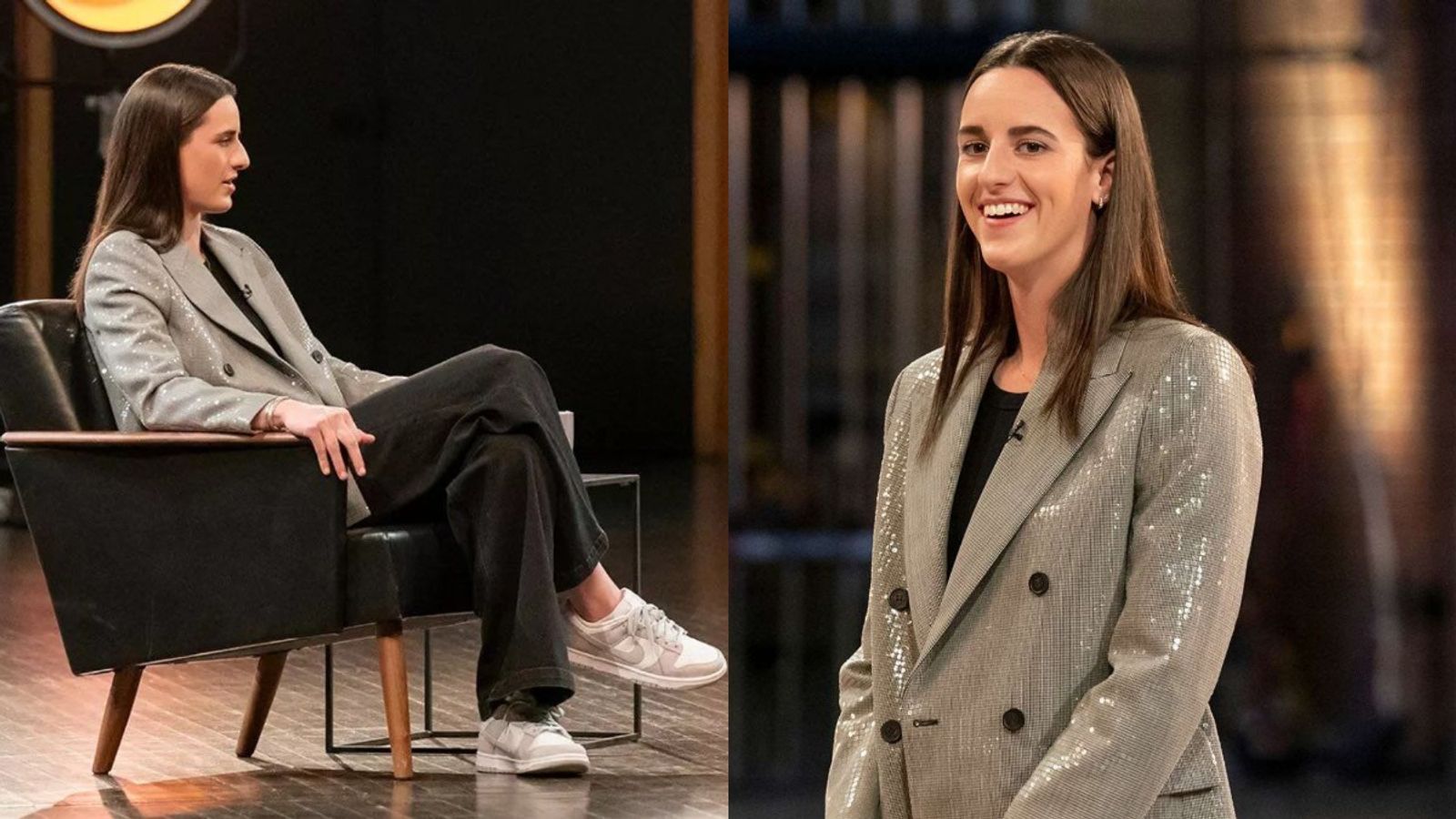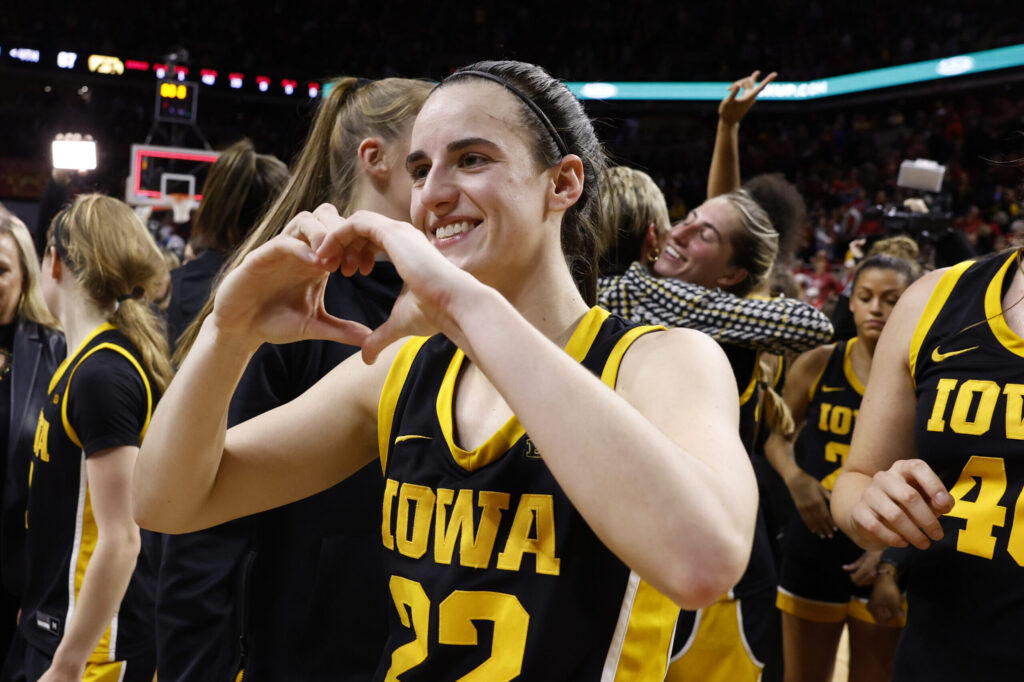The WNBA has just taken a massive leap forward in its visibility, but not everyone is happy about it. The Indiana Fever, a team that has drawn record-breaking viewership thanks to Caitlin Clark’s star power, is set to have 41 out of their 44 games nationally broadcasted. This is a historic moment for women’s basketball, yet some players and fans are pushing back against the idea. Why? Let’s dive into the backlash that’s left many questioning the future of WNBA media coverage.
First off, let’s acknowledge the groundbreaking nature of this announcement. Forty-one games. Forty-one games out of forty-four. That’s nearly the entire season of the Indiana Fever being broadcast to a national audience, marking a significant shift for the WNBA. For years, players have been advocating for more exposure, begging networks to showcase their talent in primetime slots. Now that it’s finally happening, there seems to be a bizarre backlash within the league itself.
What’s especially notable is that the Fever—led by Caitlin Clark—have already proven that their games can pull in staggering viewership numbers. Take last June’s game against the Chicago Sky, for example, which drew a whopping 3.3 million viewers. That’s more than some NBA regular-season games pull in. And this wasn’t a one-off fluke. Caitlin Clark’s presence alone has shattered previous viewership records, drawing fans in from across the nation.
So, why the backlash? After years of fighting for media coverage, how can the WNBA community now turn on the very thing they’ve been asking for? The exact same executives who ignored the league for years are suddenly clamoring for Fever games, but it’s not out of any newfound love for women’s sports. It’s about the money. Business follows the money, and with the Fever’s massive popularity, networks can no longer afford to overlook them.
In fact, the Fever’s game against the Connecticut Sun in the playoffs drew 2.97 million viewers, and the WNBA All-Star Game, featuring Caitlin Clark, shattered ESPN’s viewership record with 3.44 million viewers. These aren’t just “good for women’s sports” numbers—they are numbers that rival major men’s sports broadcasts.

The truth is simple: networks aren’t broadcasting 41 out of 44 Fever games out of fairness. They are broadcasting them because fans are watching. The Fever’s ability to generate millions of viewers has caused a ripple effect in broadcasting, with executives rethinking how they approach basketball coverage. The Fever aren’t even the most successful team in the league—they were only an average team last season—but their games sold out arenas and broke viewership records nonetheless.
It’s not about whether the Fever are winning; it’s about the Clark Effect. Fans want to see Caitlin Clark play, whether her team wins or loses. This isn’t a coincidence, and it’s certainly not favoritism. Networks are simply responding to demand, and that’s why the Fever are getting this unprecedented level of exposure. It’s pure business.
While some may view the Fever’s media dominance as unfair, it’s important to realize that the exposure isn’t just benefiting one team or one player. It’s helping to elevate the entire league. When 15,000 fans pack arenas, it’s not just the Fever players who benefit—it’s everyone. The atmosphere and energy created by large crowds can help lift other teams, too. As more fans are exposed to the game, they will start to follow not just Caitlin Clark but other stars, too.
Moreover, every Fever game that’s broadcast is an opportunity for millions of fans to see other WNBA players. Players who might not have had the same exposure but now have the chance to shine on national TV. It’s about giving everyone a platform and a chance to grow the sport.
The backlash from some within the league is almost self-defeating. Complaints about “special treatment” for the Fever don’t acknowledge the bigger picture—that this move will lead to greater visibility for the entire WNBA. By supporting the broadcasting of Fever games, fans are supporting the entire league, not just one team or player. It’s about long-term growth, and undermining this moment could reverse the progress that the WNBA has fought so hard for.
Unfortunately, some critics have even suggested boycotting Fever games, undermining the viewership numbers that the league needs to continue to grow. This kind of resistance doesn’t help anyone—it only hurts the league. If fans refuse to watch these games through official channels, they are essentially sabotaging future broadcasting deals and the very thing that will allow the league to become profitable.
This is a landmark moment for women’s basketball. For the first time in its history, the WNBA has the opportunity to prove that it can be profitable. The league has never turned a profit before, but with the increased attention, sponsorships, and television deals, the future looks brighter than ever. This momentum couldn’t have come at a better time, as collective bargaining agreement (CBA) negotiations are on the horizon. Players now have the leverage they’ve long deserved to demand better compensation and working conditions.

We’re witnessing the rise of a new era in women’s sports, and we should be celebrating it. The fans, the players, and the networks are all part of this evolution. It’s not just Caitlin Clark’s moment—it’s a collective victory for the entire WNBA.
The criticism of Caitlin Clark and the Indiana Fever’s success misses the mark. This is about more than one team. It’s about creating a sustainable future for the entire league. With more fans, better compensation for players, and increased visibility, the WNBA has the chance to finally break through.
It’s time to embrace the growth, the exposure, and the opportunity. Whether you’re a fan of the Fever or not, this is a win for women’s basketball. The league is finally getting the recognition it deserves. Let’s support that progress and ensure that this moment leads to even greater success for the next generation of athletes.
The WNBA’s path forward is clear: It’s time to capitalize on this momentum and take women’s basketball to new heights.
Caitlin Clark, Serena Williams will participate in an NFL panel discussion on flag football
The NFL is trying to grow flag football, which will made its Olympic debut in 2028. The league eventually wants to launch a professional flag football league.
The sport is begin sanctioned for female athletes in some states at the high school and at lower college levels.

The NFL, at its annual owners meetings next week in Palm Beach, Florida, will hold a panel discussion about women’s sports and the league’s aspirations around flag football.
Eric Fisher of Front Office Sports reports that WNBA superstar Caitlin Clark and former tennis star Serena Williams will participate in the panel along with former Giants quarterback Eli Manning and Broncos co-owner Mellody Hobson.
“Flag football is a high priority of ours,” NFL executive vice president Jeff Miller said in response to a FOS question during a conference call Wednesday previewing the annual meeting. “It’s an opportunity for young women to participate in our game . . . and as we look forward, there definitely seems to be an appetite and interest in a professional flag league for both men and women So, it’s a continuation of the growth in women’s sports, and the role that the NFL can play in it.”
Williams is a part-owner of the Dolphins, and Clark has also shown interest in eventual NFL team ownership.
NFL Reportedly Turning to Caitlin Clark for ‘Key Initiative’
Indiana Fever superstar Caitlin Clark has already made it abundantly clear that one of her goals outside the basketball court is to be an owner of a sports team. This nearly came to fruition after the 23-year-old took part in an ownership group’s $100 million bid to bring a National Women’s Soccer League (NSWL) team to Cincinnati.
Unfortunately, their bid fell through, with the league opting to award the franchise to Denver.
While Clark’s dream may have been temporarily put on hold, this does not necessarily mean that it’s dead. Her supposed venture into the NWSL may not have been a success, but perhaps something bigger could be in the books for her in the future.

Given her stature as a global superstar, combined with the fortune she has amassed in the past few years, it would not be impossible to think that Clark could potentially be an NFL team owner somewhere down the road.
While there appear to be no concrete reports about this at the moment, what is clear is that the WNBA All-Star is already building a strong connection with the NFL.
According to a new report by Front Office Sports, the league is enlisting Clark’s help for a “key initiative.” The NFL will be holding a panel discussion in its upcoming annual meeting next week in Palm Beach, Florida, and Clark will reportedly be part of the panel. The discussion will center around the rise of women’s sports as well as “the league’s aspirations around flag football.”
NFL EVP Jeff Miller told Front Office Sports that flag football, which has gained entry into the 2028 Olympics in Los Angeles, “is a high priority of ours.”
“There definitely seems to be an appetite and interest in a professional flag league for both men and women,” Miller continued. “So it’s a continuation of the growth in women’s sports, and the role that the NFL can play in it.”
Clark will reportedly join the panel discussion alongside tennis legend Serena Williams, Super Bowl-winning quarterback Eli Manning and Denver Broncos co-owner Mellody Hobson, as they convene in front of team owners and personnel from across the league.
There are few bigger names in women’s sports today than Clark, and it is clear that the NFL is doing what it can to capitalize on the same. For Clark’s part, this could potentially open the door for what could be a fruitful relationship in the future.
